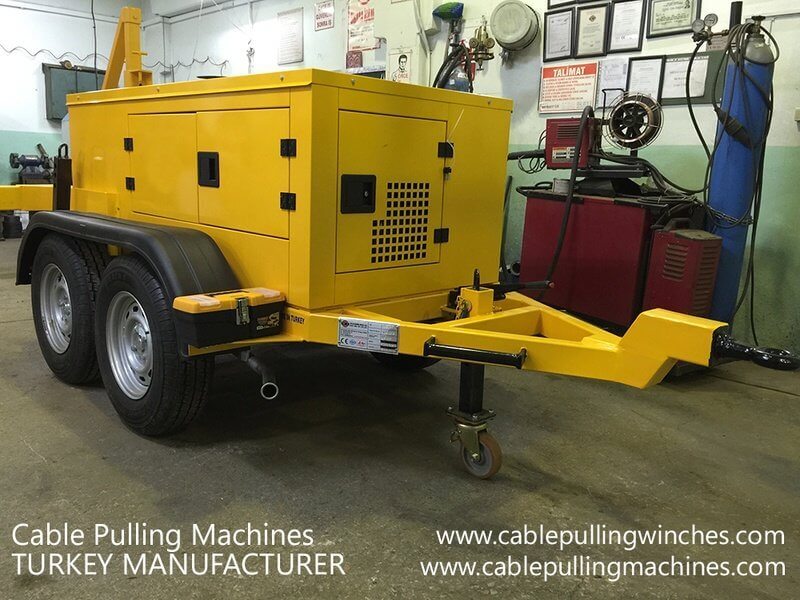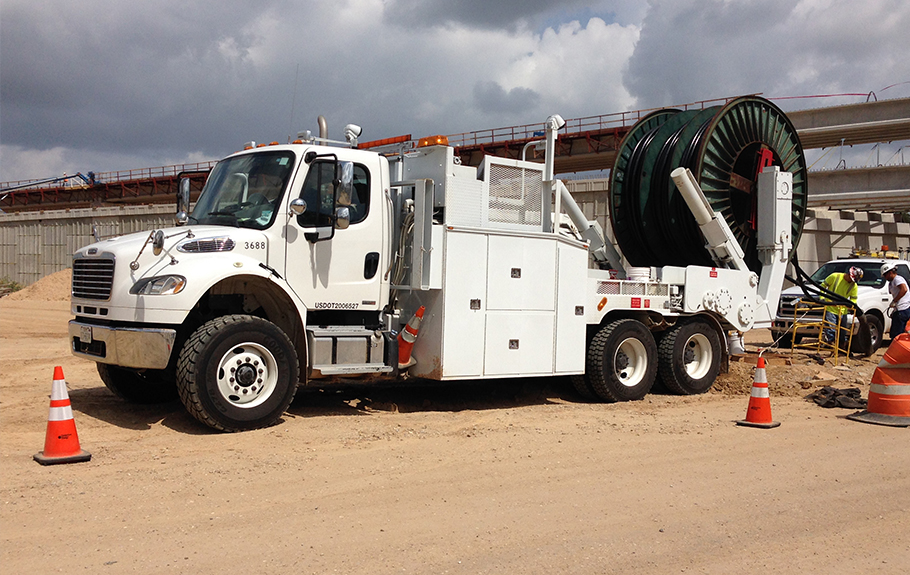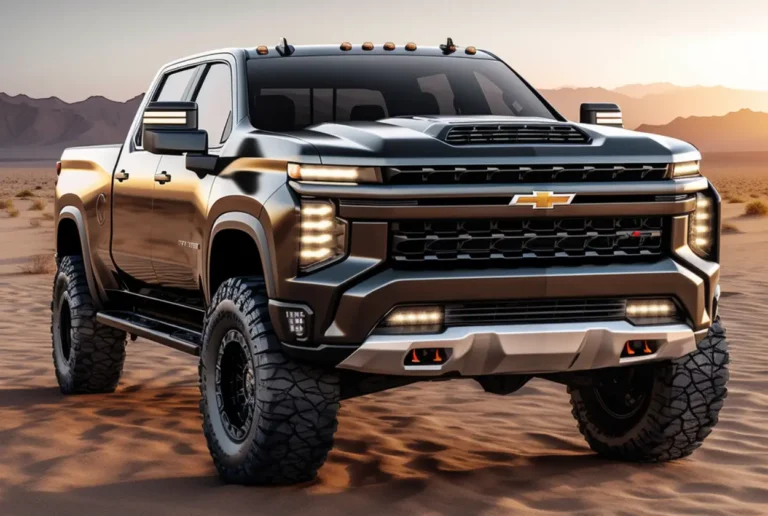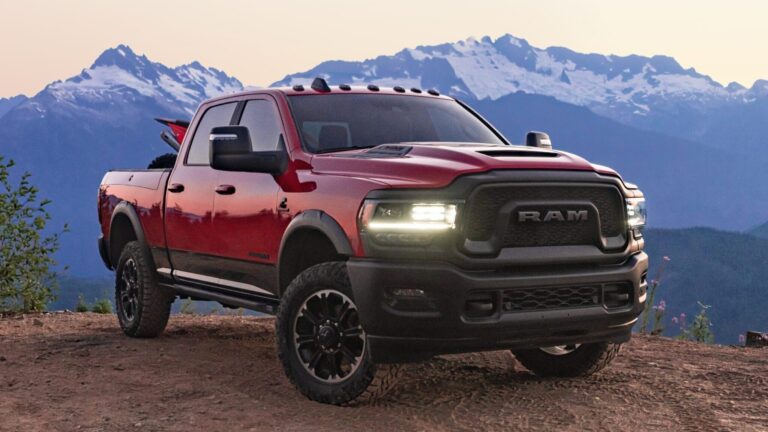Cable Pulling Trucks For Sale: Your Comprehensive Guide to Acquiring Essential Infrastructure Equipment
Cable Pulling Trucks For Sale: Your Comprehensive Guide to Acquiring Essential Infrastructure Equipment cars.truckstrend.com
In the intricate dance of modern infrastructure development, from illuminating cities with power lines to connecting the world with fiber optic cables, a specialized piece of equipment stands as an unsung hero: the cable pulling truck. These powerful, purpose-built vehicles are the backbone of utility, telecommunications, and construction projects, designed to efficiently and safely install or remove heavy, long stretches of cable through conduits, trenches, or overhead pathways. For businesses looking to expand their capabilities, enhance efficiency, or replace aging fleet assets, understanding the market for "Cable Pulling Trucks For Sale" is paramount.
This comprehensive guide delves into everything you need to know about these vital machines. We’ll explore their function, the benefits of owning one, the various types available, crucial buying considerations, where to find them, and practical advice to ensure your investment is a sound one. Whether you’re a seasoned contractor or a burgeoning utility company, mastering the nuances of acquiring a cable pulling truck is key to project success and operational excellence.
Cable Pulling Trucks For Sale: Your Comprehensive Guide to Acquiring Essential Infrastructure Equipment
What Exactly Are Cable Pulling Trucks?
At their core, cable pulling trucks are specialized utility vehicles equipped with powerful hydraulic winches, sophisticated control systems, and often a boom or derrick, designed for the precise and controlled installation or removal of cables. Unlike standard trucks, their primary function revolves around generating immense pulling force while maintaining tension control, crucial for protecting delicate cables and ensuring worker safety.
Key components typically include:
- Hydraulic Winch System: The heart of the truck, providing the pulling force. These can vary significantly in capacity, from a few thousand pounds to over 100,000 pounds of pulling force. They often feature variable speed control and automatic tensioning systems.
- Boom/Derrick: A telescoping or articulating arm that helps guide cables, lift reels, or provide an elevated anchor point for pulling.
- Reel Stands/Carriers: Integrated or detachable systems designed to safely hold and payout large cable reels, often with braking mechanisms to prevent overruns.
- Control Panels: Advanced interfaces that allow operators to monitor pulling tension, speed, distance, and other critical parameters, often with data logging capabilities.
- Outriggers/Stabilizers: Essential for providing stability during heavy pulling operations, preventing the truck from tipping.
- Storage & Tooling: Compartments for specialized tools, pulling grips, swivels, conduit rods, and safety equipment.

These trucks are engineered for demanding environments, built on robust chassis with heavy-duty suspensions and powertrains capable of handling significant loads and prolonged operational hours.

Why Invest in a Dedicated Cable Pulling Truck? (Benefits)
The decision to invest in a dedicated cable pulling truck, rather than relying on makeshift solutions or rented equipment, brings a multitude of benefits that directly impact project efficiency, safety, and profitability:
- Unparalleled Efficiency and Speed: Purpose-built systems are far more efficient than manual labor or general-purpose machinery. They can pull long lengths of cable quickly and smoothly, significantly reducing project timelines.
- Enhanced Safety: Modern cable pulling trucks incorporate numerous safety features like overload protection, emergency stops, tension limits, and controlled payout, minimizing the risk of cable damage, equipment failure, and, most importantly, worker injury.
- Precision and Control: Advanced hydraulic and electronic controls allow for precise management of pulling force and speed, critical for delicate fiber optic cables or large, heavy power cables that require specific tension parameters.
- Versatility: Many trucks can handle a wide range of cable types and sizes, from small communication lines to massive underground power cables, making them versatile assets for diverse projects.
- Cost-Effectiveness in the Long Run: While the initial investment can be substantial, owning a cable pulling truck reduces reliance on expensive rentals, minimizes labor costs due to increased efficiency, and prevents costly cable damage, leading to significant savings over time.
- Professionalism and Reliability: Owning the right equipment enhances your company’s reputation, allowing you to bid on larger, more complex projects with confidence, knowing you have the tools to deliver.
- Compliance: Many industry standards and safety regulations implicitly require or are best met by using dedicated, properly maintained cable pulling equipment.

Types of Cable Pulling Trucks Available
The market for cable pulling trucks is diverse, with various configurations designed to meet specific needs. Understanding these categories is crucial for making an informed purchase:
-
By Pulling Capacity:
- Light-Duty (5,000 – 15,000 lbs): Ideal for smaller communication cables, fiber optics, or lighter electrical lines. Often built on commercial van or light-truck chassis.
- Medium-Duty (15,000 – 40,000 lbs): Workhorse trucks for a wide range of telecom, electrical distribution, and moderate utility projects. Typically on single-axle commercial truck chassis.
- Heavy-Duty (40,000+ lbs): Designed for large power transmission cables, heavy underground conduit pulls, and industrial applications. Often built on tandem-axle or custom heavy-duty chassis.
-
By Application:
- Underground Cable Pullers: Feature powerful winches, often with capstan or bullwheel designs, and sometimes integrated rod pushers for conduit clearing.
- Overhead Line Stringers: Equipped with derricks or booms for stringing aerial cables, often with tensioning and payout capabilities.
- Multi-Purpose/Combination Trucks: Designed for versatility, capable of both underground and overhead work with interchangeable attachments or integrated systems.
-
By Configuration:
- Integrated Units: A complete system built onto a single truck chassis, offering a cohesive and efficient package.
- Truck-Mounted Winches: A winch system mounted onto a standard truck chassis, often allowing for more customization of the truck itself.
- Skid-Mounted/Trailer-Mounted Units: While not "trucks" themselves, these are often paired with a truck for transport and power, offering flexibility for remote or difficult-to-access sites.
-
New vs. Used:
- New Trucks: Offer the latest technology, full warranties, and customization options. Higher initial cost but lower immediate maintenance concerns.
- Used Trucks: More budget-friendly, quicker availability. Requires thorough inspection, due diligence on maintenance history, and potential for higher immediate repair costs. A well-maintained used truck can be an excellent value.
Key Considerations When Buying a Cable Pulling Truck
Purchasing a cable pulling truck is a significant investment that requires careful evaluation. Here are the critical factors to consider:
- Required Pulling Capacity: This is paramount. Overestimating leads to unnecessary cost, underestimating leads to inefficiency or equipment damage. Analyze your typical projects’ cable weights, lengths, and conduit friction.
- Winch Type and Features:
- Capstan vs. Reel: Capstan winches offer continuous pulling without requiring large reel capacity on the truck. Reel winches store the pulled cable directly on a drum.
- Tension Control: Look for systems that maintain consistent tension and can log data.
- Automatic Level Wind: Essential for neatly layering cable on the drum, preventing tangles and damage.
- Hydraulic vs. Mechanical: Hydraulics offer smoother operation and finer control.
- Engine & Chassis: Evaluate the truck’s engine power, fuel efficiency, GVWR (Gross Vehicle Weight Rating), and overall chassis robustness. Consider the brand’s reputation for reliability and parts availability.
- Boom/Derrick Features (if applicable): Assess reach, lifting capacity, articulation, and safety interlocks.
- Safety Features: Ensure the truck has essential safety mechanisms: emergency stops, overload protection, anti-two-block systems (for booms), proper lighting, and robust outriggers. OSHA and other regulatory compliance is non-negotiable.
- Maintenance & Service History (for used trucks): A comprehensive service record is vital. Look for evidence of regular fluid changes, winch calibrations, and hydraulic system inspections. Ask about any major repairs or rebuilds.
- Ancillary Equipment & Compatibility: Consider if the truck comes with or is compatible with necessary accessories like pulling grips, swivels, conduit rodders, tensioners, and payout stands.
- Budget & Financing: Determine your budget range. Explore financing options (loans, leases) and understand the total cost of ownership, including insurance, maintenance, and operational expenses.
- Regulatory Compliance: Verify that the truck meets all federal, state, and local regulations for vehicle operation and specialized equipment use.
Where to Find Cable Pulling Trucks For Sale
The market for cable pulling trucks is specialized but accessible. Here are the primary avenues to explore:
- Specialized Utility Equipment Dealerships: These dealers often carry new and used trucks from major manufacturers like Altec, Terex, Versalift, Hogg & Davis, and Condux. They offer expertise, financing, and after-sales support.
- Online Heavy Equipment Marketplaces: Websites like TruckPaper.com, EquipmentTrader.com, IronPlanet.com, and MachineryTrader.com host thousands of listings from dealers and private sellers worldwide.
- Auction Houses: Major auctioneers like Ritchie Bros. Auctioneers and IronPlanet frequently feature utility trucks, including cable pullers, as utility companies upgrade their fleets. Auctions can offer good deals but require quick decision-making and often "as-is" purchases.
- Direct from Utility Companies/Contractors: Companies sometimes sell off older equipment directly when upgrading. Networking within the industry or checking industry-specific forums can uncover these opportunities.
- Equipment Brokers: Brokers specialize in finding specific types of equipment for buyers, leveraging their networks to locate trucks that might not be publicly advertised.
Tips for a Successful Purchase
Navigating the purchase process effectively can save you time, money, and headaches:
- Define Your Needs Clearly: Before you even start looking, create a detailed list of your requirements: desired pulling capacity, typical job types, budget, preferred features, and any brand preferences.
- Conduct Thorough Inspections: For used trucks, a pre-purchase inspection by a qualified mechanic or specialist is non-negotiable. Check the hydraulic system for leaks, inspect the winch drum and cable, test all controls, and examine the chassis for rust or structural damage.
- Request Service Records: Always ask for a complete maintenance history. This provides insight into how well the truck was cared for and potential future issues.
- Test Drive and Operate: If possible, test drive the truck and operate the cable pulling system. Listen for unusual noises, check for smooth operation, and verify all functions work correctly.
- Negotiate Wisely: Don’t be afraid to negotiate the price, especially for used equipment. Be prepared with market research on similar trucks.
- Consider Post-Purchase Support: Inquire about parts availability, service centers, and technical support for the specific make and model you’re considering.
- Understand Warranty (if any): For new trucks, understand the warranty terms. For used, be aware that most are sold "as-is" unless explicitly stated otherwise.
Potential Challenges & Solutions
While acquiring a cable pulling truck is beneficial, be aware of potential challenges:
- High Upfront Cost:
- Solution: Explore financing options, consider a well-maintained used truck, or evaluate leasing as an alternative to outright purchase.
- Maintenance Complexity:
- Solution: Budget for regular preventative maintenance, ensure you have access to trained technicians, and stock essential spare parts.
- Finding the Right Capacity/Configuration:
- Solution: Conduct a detailed analysis of your operational needs and consult with equipment specialists or experienced contractors.
- Ensuring Regulatory Compliance:
- Solution: Thoroughly research all federal, state, and local regulations related to vehicle registration, specialized equipment operation, and safety standards.
Price Table: Estimated Costs for Cable Pulling Trucks For Sale
Prices for cable pulling trucks vary dramatically based on manufacturer, model year, condition (new vs. used), pulling capacity, included features, and overall market demand. The table below provides estimated ranges for general guidance. Always obtain specific quotes for accurate pricing.
| Type/Capacity Category | Condition (New/Used) | Estimated Price Range (USD) | Key Features Typically Included |
|---|---|---|---|
| Light-Duty | Used (5-10 years old) | $40,000 – $80,000 | 5,000-15,000 lbs pull, basic controls, smaller chassis. |
| (5k-15k lbs) | New | $100,000 – $200,000+ | Latest tech, warranty, custom options, ergonomic design. |
| Medium-Duty | Used (5-10 years old) | $80,000 – $180,000 | 15,000-40,000 lbs pull, hydraulic winch, basic boom/derrick. |
| (15k-40k lbs) | New | $200,000 – $450,000+ | Advanced tension control, data logging, robust chassis. |
| Heavy-Duty | Used (5-10 years old) | $150,000 – $350,000+ | 40,000+ lbs pull, large capacity, complex hydraulics, heavy-duty boom. |
| (40k+ lbs) | New | $400,000 – $800,000+ | High-precision controls, integrated reel handling, custom builds. |
| Specialized/Custom | New or Refurbished | $500,000 – $1,000,000+ | Specific applications (e.g., submarine cable, ultra-high tension), bespoke features. |
Note: These are general estimates and do not include additional costs like taxes, shipping, financing fees, or necessary ancillary equipment (e.g., pulling grips, swivels, conduit rodders).
Frequently Asked Questions (FAQ)
Q1: What is the typical lifespan of a cable pulling truck?
A1: With proper maintenance, a well-built cable pulling truck can last 15-25 years or more. The chassis life often exceeds the specialized equipment life, meaning components like the winch or hydraulic system might need rebuilding or replacement before the truck itself.
Q2: Can I convert a regular truck into a cable pulling truck?
A2: While it’s technically possible to mount a winch onto a truck, converting a regular truck into a professional-grade cable pulling truck is highly complex and generally not recommended. It requires significant structural modifications, hydraulic system integration, specialized safety features, and engineering expertise to ensure safety and performance, often making it more expensive and less effective than buying a purpose-built unit.
Q3: What kind of maintenance do these trucks require?
A3: Regular maintenance includes routine chassis servicing (oil changes, tire rotation, brake checks), hydraulic system checks (fluid levels, filter changes, hose inspections), winch lubrication, calibration of tension control systems, and structural inspections of booms/derricks and outriggers. Adhering to manufacturer-recommended service intervals is crucial.
Q4: Is financing available for used cable pulling trucks?
A4: Yes, financing is commonly available for both new and used cable pulling trucks. Many equipment dealerships offer in-house financing, and specialized equipment finance companies can provide loans or leasing options. Interest rates and terms will vary based on the truck’s age, your creditworthiness, and market conditions.
Q5: What safety certifications should I look for when buying?
A5: Ensure the truck meets relevant safety standards such as OSHA (Occupational Safety and Health Administration) regulations in the U.S., or equivalent national safety standards elsewhere. Look for evidence of regular dielectric testing (for insulated booms), crane certifications (if applicable), and clear safety warnings and operational instructions.
Q6: How do I determine the right pulling capacity for my needs?
A6: This requires an analysis of the heaviest and longest cables you typically pull, considering factors like cable weight per foot, length of pull, and estimated friction within conduits (often calculated with software). Consult with cable manufacturers and experienced engineers to determine the peak pulling force required for your most demanding projects, then select a truck with a comfortable margin above that.
Conclusion
Acquiring a cable pulling truck is more than just purchasing a piece of heavy machinery; it’s an investment in your operational efficiency, worker safety, and the long-term success of your business. These specialized vehicles are indispensable tools for building and maintaining the critical infrastructure that powers and connects our world.
By thoroughly understanding the different types available, meticulously evaluating key considerations, and leveraging the practical advice outlined in this guide, you can navigate the market for "Cable Pulling Trucks For Sale" with confidence. A well-chosen cable pulling truck will not only streamline your projects and enhance your capabilities but also serve as a reliable workhorse, pulling your business forward for years to come.






